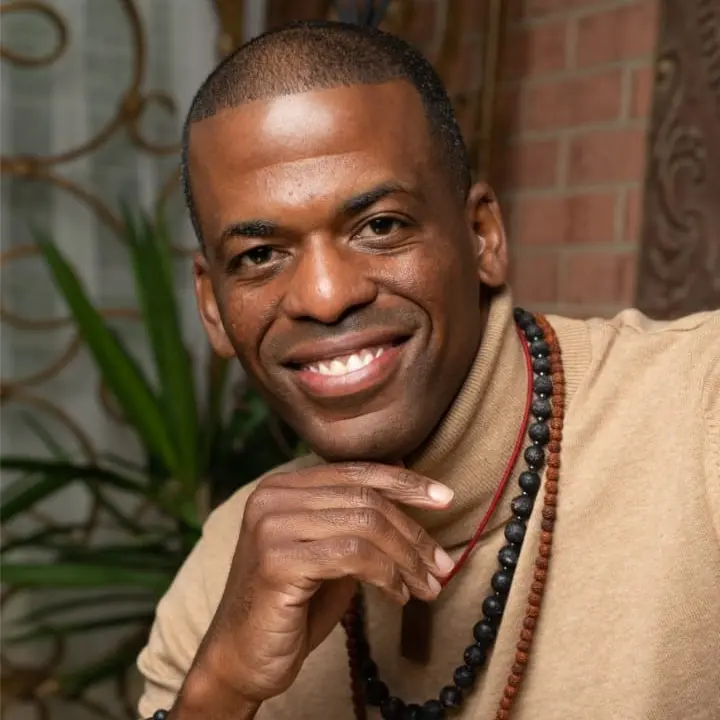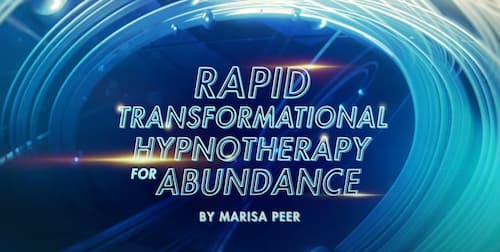The thousand-yard stare—its meaning goes deeper than looking out to a certain distance. The thing is, if you’ve seen a war movie or two, you’re likely to know what it is (even if you aren’t familiar with the term):
A soldier in shell shock, gazing blankly into the distance with their eyes wide and vacant. It’s the kind of look that feels like it could pierce right through you, yet the person is a million miles away.
This is what happened to Peter Lucas, a retired Marine who’s now a transformational coach and CEO of A Life On Purpose.
“This term, the thousand-yard stare, for me personally, is more than just a blank stare into nothingness,” he tells Mindvalley Blog. It’s something that’s shown up in his life in more ways than he’d care to admit.
So what does the “thousand-yard stare” mean, especially if you’re not tied to the military? Understanding its significance in terms of mental health can help you recognize the signs and make dealing with your own difficult emotions (or helping others) a little less daunting.
It’s important to note: If you notice yourself or someone you care about exhibiting this stare frequently, it’s advisable to seek professional help.
What Is a Thousand-Yard Stare?
Originating from the military lexicon, the thousand-yard stare is used to describe the blank, emotionless expression of someone who has experienced significant trauma or psychological distress. Their eyes are often wide and vacant, with a withdrawn and unresponsive way about them.
Peter himself, having been exposed to explosions, sirens, gunfire, and even “mangled human flesh,” found that it was a way for his mind to “deal with all that I have seen and experienced over a long period of time.”
However, this type of shell shock isn’t simply zoning out. Rather, it’s a way for the brain to cope with overwhelming emotions tied to trauma.
What happens is, the nervous system gets flooded with stress hormones, which can be incredibly difficult to process. In response, the brain activates a defense mechanism called dissociation, which disrupts activity in areas like the amygdala (involved in processing emotions) and the medial prefrontal cortex (responsible for self-awareness).
Now, dissociation (of which the thousand-yard stare is one) is a way of mentally detaching oneself from a situation or memory that’s too painful to process head-on. It creates a psychological distance from the traumatic experience.
“So often, when we feel uncomfortable, we try to escape it,” explains Jennifer Partridge, a tapping expert and trainer of Mindvalley’s Tapping into Emotional Mastery Quest.
“We may avoid it through scrolling on social media, numb it through substances, food, and sex, or simply try our very best to put on a happy face.” (Or, in this case, going off into the nether regions of your mind with that zombie look on your face.)
It’s kind of like hitting the pause button on emotions. It gives a person some space to breathe and manage the overwhelming feelings before they can fully re-engage with what happened.
Who gets it?
“This typically happens to soldiers after they see something traumatic in the field of battle,” says Sterling Gordon Fournier in his TikTok video, which has garnered more than half a million views to date.
However, it’s not exclusive to Marines with combat stress, like Peter.
So who else can get the thousand-yard stare? Firefighters, police officers, and emergency responders, to name a few.
But still, if you’re career doesn’t revolve around seeing trauma, here are some other situations that might trigger it:
- Physical, emotional, or sexual abuse
- Accidents or injuries
- Grief and loss
- Chronic illness
What’s important to remember is, the thousand-yard stare isn’t a diagnosis in and of itself. It’s a symptom that can point to deeper emotional issues.
The Thousand-Yard Stare In Children
Undoubtedly, seeing a thousand-yard stare in a child can be incredibly concerning. Here’s what it might look like:
- Withdrawn and disconnected, staring into space for long periods with a vacant expression.
- Avoid eye contact or make fleeting eye contact that seems distant and unfocused.
- Numb or emotionally flat, not reacting as strongly to happy or sad situations as they usually would.
- Appear listless or have a slumped posture.
Just like adults, children might use this type of dissociation as a coping mechanism for psychological trauma.
What Causes the Thousand-Yard Stare?
Anything can trigger the thousand-yard stare—from witnessing violence to experiencing neglect or abuse to trauma bonds, even seemingly less dramatic events like a difficult move or a bullying situation.
“When trauma takes place, whether that be emotional, mental, or physical trauma, often our brain and nervous system store a feeling of not being safe,” says Jennifer.
Studies have shown that when people experience extreme stress, their brains may activate dissociation as a defense mechanism. By doing so, they can create a psychological distance from the painful reality they face.
It’s a kind of emotional self-preservation mechanism. One that allows them to numb themselves to the emotional intensity of their trauma.
“My inability to detach myself from my experiences from the past,” Peter shares, “robbed me of the ability to remain present.”
So it’s incredibly important to understand that dissociation is a temporary coping mechanism. It’s absolutely not a long-term solution.

3 Ways That Can Help Heal From the 1000-Yard Stare
The thousand-yard stare is a symptom of dissociation, not a condition itself. Therefore, treating someone with it focuses more on addressing the underlying cause—trauma.
So how is the thousand-yard stare treated?
Therapy often takes center stage here.
Cognitive behavioral therapy (CBT) can equip you with tools to manage stress and cope with difficult situations in healthier ways. What’s more, techniques like EMDR (eye movement desensitization and reprocessing) can help reduce the emotional intensity of memories.
These methods can be supported with complementary therapy. Here are a few to consider:
1. EFT (emotional freedom technique) tapping
EFT tapping involves gently tapping on specific acupressure points while focusing on the traumatic memory or negative emotions. This practice aims to disrupt the connection between the memory and the emotional response.
Jennifer explains that when you do so, you “rewire those pathways and reactive responses to actually experience safety, healing, and love again.”
2. Hypnotherapy
Hypnotherapy can be helpful in processing trauma in a safe and controlled environment. It doesn’t involve mind control; rather, it’s working with a hypnotherapist to access your deeper thoughts and memories for healing.
There are several techniques that renowned hypnotherapist Paul McKenna teaches in his Everyday Bliss Quest on Mindvalley. This includes thought field therapy tapping, the Havening Technique, and the Big Mind Technique.
3. Lucid dreaming
Lucid dreaming can be a powerful tool for self-exploration. It’s where you’re aware that you’re dreaming, and you can potentially even gain some control over what’s happening in it.
While it’s not a mainstream therapy yet, there has been research that suggests it could be helpful in PTSD recovery. A 2023 study, led by a team that included lucid dreaming expert and Mindvalley trainer Charlie Morley, showed that over 85% of the participants were “no longer classified as having post-traumatic stress disorder.”
“PTSD and trauma nightmares are disempowering experiences,” explains Charlie in his Experience Lucid Dreaming Quest on Mindvalley. “But to become fully aware within a nightmare and know that it is just a dream is a deeply empowering experience.”
Heal. Rise. Thrive.
The truth of the matter is, healing is possible. Peter attributed his to yoga and reading “all things about getting to know myself better.”
Another simple yet powerful technique that can help you heal from within is tapping—and you can learn how in Mindvalley’s Tapping into Emotional Mastery Quest.
Led by Jennifer Partridge, this program empowers you to release blockages and experience a deep sense of emotional freedom and peace.
Bryn Jordaan, a survivor of childhood trauma (who’s also a Mindvalley Member), probably said it best: “This is one of those LIFE HACKS we all need to have in our life toolkit.”
You can experience firsthand what he’s talking about when you sign up for a free Mindvalley account. With it, you’ll gain access to the first few lessons of the Quest and see how effective this tool is to help you break free from emotional damage.
Welcome in.












